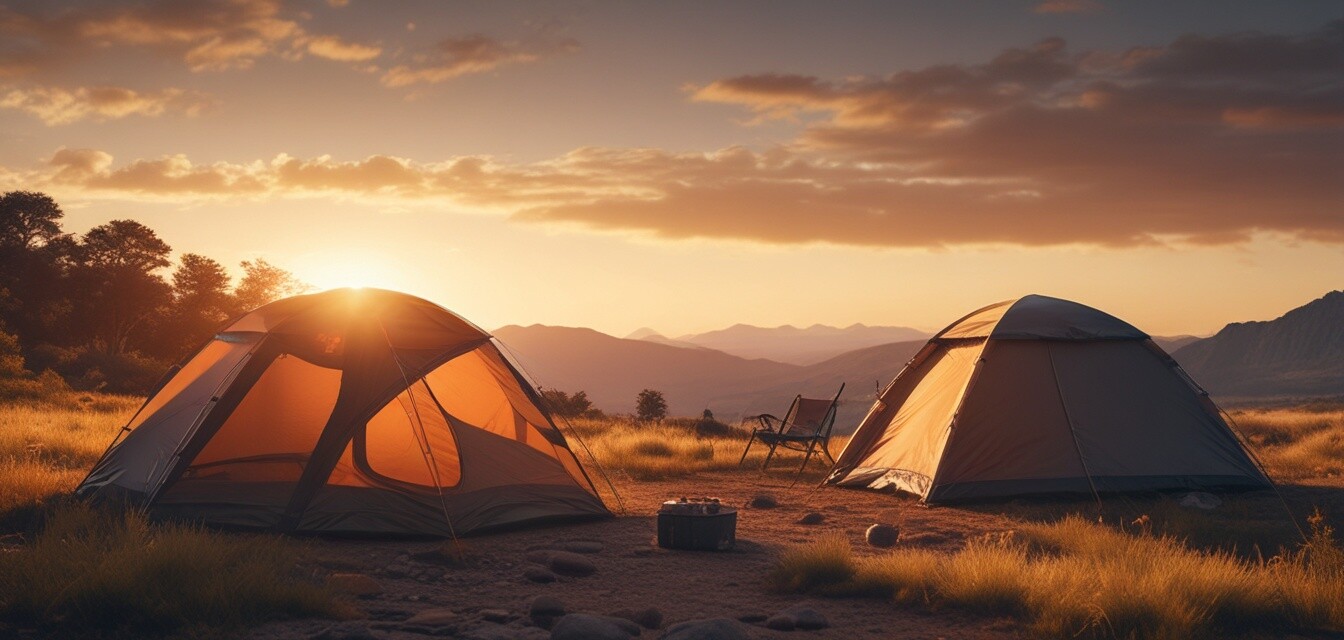
How to Build Your Own Solar-Powered Camping Setup
Key Takeaways
- Understand the fundamentals of solar power for camping.
- Select the right solar panels and batteries for your needs.
- Prioritize energy-efficient devices to optimize power usage.
- Assemble your setup considering weight, portability, and durability.
- Explore additional solar-powered gear to enhance your camping experience.
Creating your own solar-powered camping setup can dramatically enhance your outdoor adventures while providing you with the convenience of energy generation. In this comprehensive guide, we’ll cover essential steps, gear, and tips to build a reliable solar-powered setup tailored to your needs. Whether you're a casual camper or a seasoned explorer, this guide will empower you with the knowledge to enjoy nature freely.
Understanding solar power for camping
Solar power is an excellent solution for camping, allowing you to harness the sun's energy to power your essentials. The setup typically includes solar panels, batteries, and inverters to convert and store energy. Understanding the core components and how they work together is crucial in building your solar-powered camping system.
What you need for your setup
Your solar-powered camping setup will require several components. Here’s a list of essential items:
- Solar panels
- Battery storage
- Inverter
- Charge controller
- Energy-efficient appliances
Choosing the right solar panels
When selecting solar panels for your camping setup, consider factors such as power output, size, and weight. Below is a comparison table to help you understand common panel specifications:
| Solar Panel Type | Power Output (Watts) | Weight (lbs) | Portability |
|---|---|---|---|
| Monocrystalline | 100W | 15 | High |
| Polycrystalline | 90W | 20 | Medium |
| Thin-Film | 70W | 8 | Very high |
Battery storage options
The battery is crucial for storing energy generated by your solar panels. Consider using lithium-ion or AGM batteries due to their reliability. Below are typical options:
- Lithium-ion batteries: Lightweight, long lifespan, and quick charging.
- AGM batteries: Affordable, strong performance, and maintenance-free.
Setting up the system
Once you have selected the necessary equipment, follow these steps to assemble your solar-powered camping setup:
- Layout your solar panels: Position them in a location with maximum sun exposure. Ensure they are securely mounted.
- Connect your charge controller: This device helps regulate energy flow from the panels to the battery, preventing overcharging.
- Attach the batteries: Connect the batteries to the charge controller, following the manufacturer instructions for safety.
- Utilize an inverter: Connect the inverter to your batteries, which allows you to power AC appliances.
- Power your devices: Now you can connect your energy-efficient devices for on-the-go power.
Tips for optimizing your solar-powered camping experience
Beginners Tips
- Always test your setup before heading out to ensure everything is functioning correctly.
- Prioritize lightweight gear to avoid excess weight while hiking.
- Consider bringing along spare cables and connectors for troubleshooting.
- Use energy-efficient lights and cooking devices to maximize battery life.
- Practice solar panel maintenance by cleaning them regularly for optimal performance.
Additional solar-powered gear
Enhance your camping experience by incorporating other solar-powered products. Some popular choices include:
Conclusion
Building your own solar-powered camping setup can greatly enhance your outdoor experience while providing energy independence. By understanding the components and assembly process, you can create a customized setup tailored to your needs. Embrace the great outdoors with confidence, knowing you have a reliable energy source, and explore the many benefits of solar power in nature.
Pros
- Reduces reliance on traditional power sources
- Environmentally friendly and sustainable
- Cost-effective in the long run
- Provides a unique outdoor experience
Cons
- Initial setup cost may be high
- Requires some technical knowledge
- Performance can vary based on weather conditions